According to Travel+leisure they have presented a A Country-by-Country Guide
From lounging on Caribbean beaches to sightseeing in Serbia, Americans now have options when it comes to international travel.
As the fallout of the coronavirus pandemic put international travel on hold earlier this year, Americans looking to add another stamp to their passport postponed their global itineraries and embraced backyard staycations and road trips instead.
Months later, COVID-19 is far from over in the United States but countries around the world are starting to welcome tourists back. Unfortunately, due to an uptick in coronavirus cases and varying levels of restrictions throughout the nation, many countries have blocked Americans from visiting. Most recently, the European Union announced it will reopen its borders to more than a dozen non-EU countries on July 1, but many borders are not open to the U.S.
Additionally, the State Department imposed a Level 4: Do Not Travel advisory that was in place since March, instructing Americans “to avoid all international travel due to the global impact of COVID-19,” however the advisory was lifted at the beginning of August. The agency has returned to determining its advisory levels on a country-by-country basis.
Since the countries listed below are currently accepting American visitors, those who choose to travel are strongly encouraged to check local government restrictions, rules, and safety measures related to COVID-19 before departure — and take personal comfort levels and health conditions into consideration. Along with each country’s travel protocol Travel + Leisure has listed the State Department’s individual advisory.
Countries that are accepting American travelers but require visitors to quarantine for two weeks are also listed separately.
Albania
U.S. citizens are allowed to enter Albania without showing any test results or being required to quarantine, according to the U.S. Embassy in Albania. This follows the return of commercial flights to the country on June 15.
Albania requires masks be worn in shops and supermarkets as well as elevators of buildings. Restaurants and cafes in the country are open.
Anguilla
The Caribbean island, which is COVID-19-free, will reopen to tourists and will begin accepting applications to come on Aug. 21. As part of the process, tourists will have to fill out their desired travel dates and submit a negative COVID-19 test within three to five days before arriving. Visitors will also have to prove they have health insurance to cover potential medical expenses related to treatment of the virus.
Anyone who stays for less than 10 days will not be able to rent a car.
In addition to the application, travelers will also be tested for the virus upon arrival and then again on day 10 of their visit.
Antigua and Barbuda
Antigua and Barbuda opened its borders on June 1 in a phased plan that included reopening the international airport, according to the government. Visitors are required to take a COVID-19 test 48 hours prior to arrival and be able to present documentation of negative results. Visitors are also required to wear a mask in all public places.
Aruba
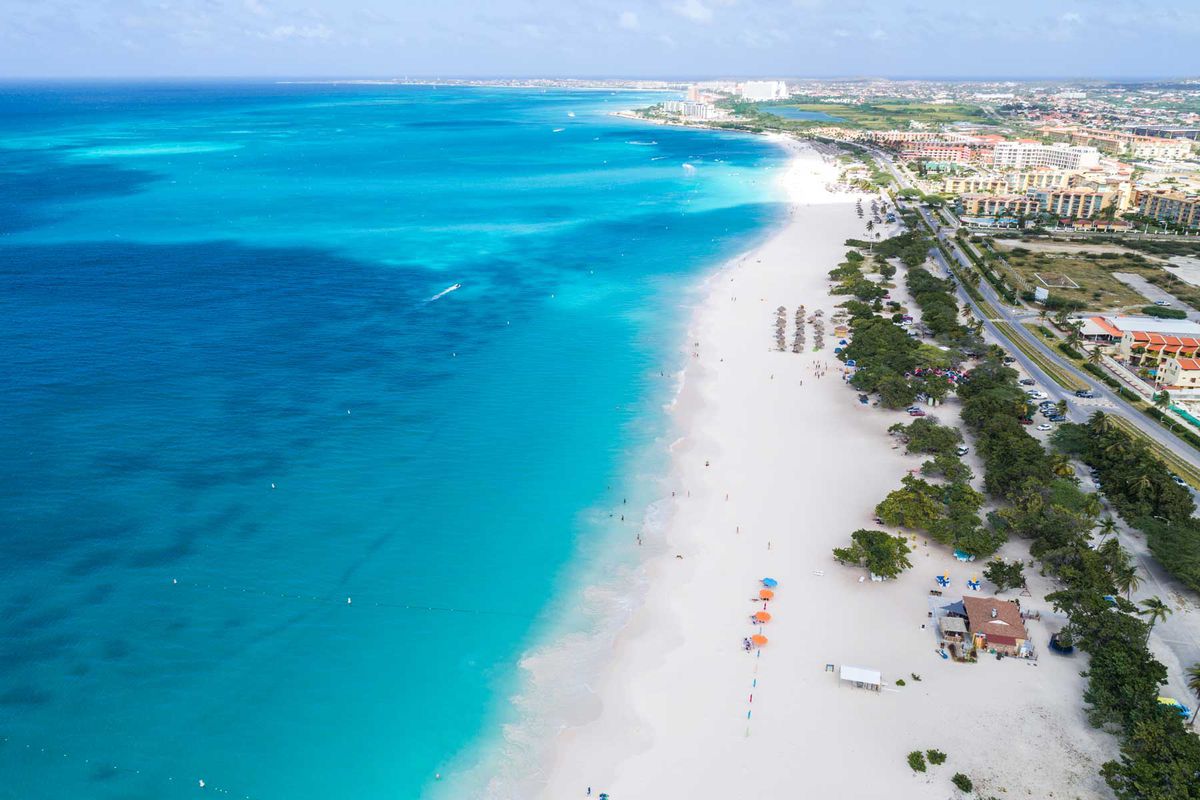
Aruba COURTESY OF ARUBA TOURISM AUTHORITY
Aruba started welcoming U.S. visitors to its turquoise waters on July 10, but travelers coming from certain states are required to upload a negative COVID-19 test online taken within 72 hours before their flight. The test has to be uploaded at least 12 hours before departing, according to the Aruba Tourism Authority.
The affected states are Alabama, Arizona, Arkansas, California, Colorado, Florida, Georgia, Idaho, Iowa, Kansas, Louisiana, Mississippi, Nevada, North Carolina, Ohio, Oklahoma, Oregon, South Carolina, South Dakota. Tennessee, Texas, Utah, Wisconsin, and Wyoming.
This follows the opening of its borders to travelers from the Caribbean (except the Dominican Republic and Haiti), Europe, and Canada, which started July 1.
While all U.S. will have to complete a self-health declaration form and show a negative COVID-19 test, travelers from states not listed above can also choose to pre-pay for a test to be completed upon arrival.
The island, which started reopening outdoor restaurants on May 25, has a cleaning and hygiene certification program for tourism-related businesses focusing on things like plexiglass barriers at desks.
Barbados
Barbados reopened to tourists on July 12. Visitors are encouraged to take a COVID-19 test 72 hours prior to departure and be able to present negative results at the airport. Travelers can also choose to undergo a test at the airport and quarantine until the results are ready.
Barbados is encouraging visitors to move there for a year for the ultimate work from home experience. The program is expected to start Aug. 1.
On June 1, the island reopened retailers, parks, and dining in restaurants, according to the Barbados Government Information Service. On June 15, all businesses were allowed to open and timing restrictions on beaches were eliminated.
Belize
Belize will reopen for tourists to explore once again on Oct. 1. Visitors will need to book with a hotel that complies with their 9-point initiative entitled, the Tourism Gold Standard Recognition Program, in which the approved hotels — listed on their tourism site — have implemented health and safety standards including online check-in and check-out and mandatory mask-wearing in public spaces.
Visitors will need to have downloaded the Belize Health App at least three days before boarding a fight, which can be used for contact tracing and reporting health symptoms. Travelers have the option to take a COVID-19 test 72 hours ahead of departure and will have to verify their negative results when they arrive in Belize or will be tested upon arrival.
If the results are positive, travelers will have to be quarantined at their own expense.
Bermuda
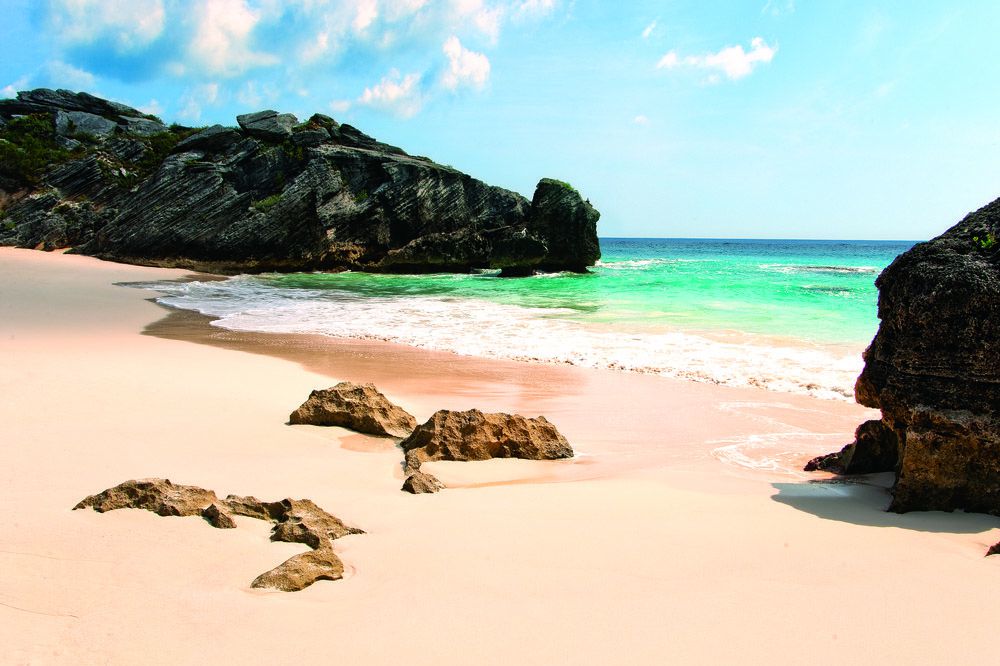
Stonehole Bay in Bermuda BERMUDA TOURISM AUTHORITY
Bermuda, a British territory, reopened for all international travel on July 1 and requires entering visitors to show a negative COVID-19 test from no more than seven days before departure, according to the Bermuda Tourism Authority. Additionally, visitors have to fill out a travel authorization process online and pay a $75 fee. Travelers will also be tested at the airport and have to quarantine at their accommodation until the results are ready, which typically takes six to eight hours.
Visitors will then be tested every few days while on the island and be required to take their temperature twice each day and report it online.
Restaurants on the island have been allowed to reopen and Bermuda’s popular beaches are open with physical distancing measures in place. On July 1, the island entered Phase 4, increasing gatherings to 50 people and reopening bars, according to the government.
Brazil
Brazil reopened its borders to international passengers traveling by air on July 29, according to the U.S. Embassy & Consulates in Brazil.
Foreign visitors are not required to quarantine, but those who are coming for up to 90 days do have to show their airline proof they have valid health insurance.
The country began lifting its lockdown in early June, when cases were still rising. Bars and restaurants have been permitted to reopen. Brazilian President Jair Bolsonaro — has been criticized for his response to the pandemic — vetoed parts of a law that would have made it necessary to wear a facemask in enclosed spaces where large groups of people gather, like churches and schools.
Cambodia
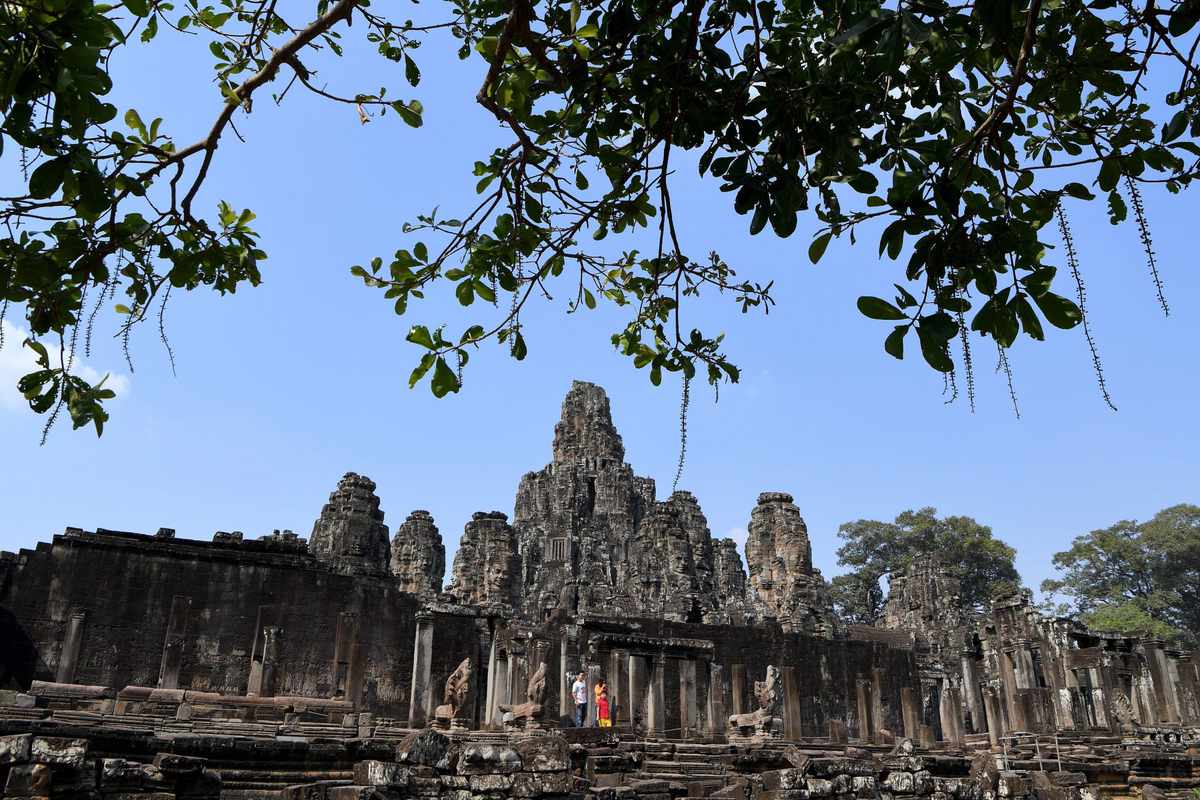
Cambodia PHOTO BY TANG CHHIN SOTHY/AFP VIA GETTY IMAGES
U.S. and other foreign travelers can take advantage of the amazing temples in Cambodia (hello Angkor Wat), but it will cost them. The country will require visitors to pay a hefty $3,000 travel deposit before entering to cover any potential coronavirus-related costs.
Travelers who test negative while there will only be on the hook for about $165 for the mandatory test, according to the U.S. Embassy in Cambodia.
Those who do go to Cambodia will also be required to show a negative COVID-19 test from no more than 72 hours before traveling, proof of medical insurance coverage for at least $50,000, as well as undergo a COVID-19 test upon arrival and wait in an official facility until the results are ready.
If someone on their arriving flight does test positive for the virus, all passengers have to quarantine for 14 days at a location chosen by Cambodian authorities. If all travelers test negative, they have to self-isolate for two weeks at their lodging.
Costa Rica
Costa Rica will welcome visitors from six U.S. states — New York, New Jersey, New Hampshire, Vermont, Maine, and Connecticut — starting Sept. 1, the Minister of Tourism confirmed to Travel + Leisure. Private planes and yachts will be allowed as well.
Travelers from these states will have to show a valid driver’s license showing they live there, present a negative COVID-19 test taken within 48 hours before travel to Costa Rica, and show they have travel insurance that covers medical expenses and accommodation in case they are forced to quarantine.
This follows the country’s reopening for international visitors from several other countries in August, including from Canada, Europe, Japan, South Korea, Singapore, Australia, and New Zealand.
Croatia
Croatia has reopened its borders to non-EU citizens for tourism, including U.S. citizens, as long as visitors show proof of a reservation for a hotel or other accommodation, according to the Croatian Ministry of Interior. Tourists in Croatia will not have to quarantine if they provide a negative COVID-19 test taken within 48 hours.
Travelers are asked to fill out an entry form online, according to the Croatian National Tourist Board.
While the European Union has recommended the U.S. not be included in the countries allowed to resume non-essential travel, individual countries are able to make their own decisions.
Dominica
Dominica reopened its borders to tourists on Aug. 7, according to the Discover Dominica Authority. Travelers must show a negative COVID-19 test taken 24 to 72 hours before arrival and submit an online health questionnaire at least 24 hours prior to arrival.
Upon arrival, travelers will also have to undergo a rapid test. Hotels on the island will then perform temperature checks at entrances and luggage will be sanitized upon arrival.
Visitors must book their stay at COVID-certified accommodations.
Dominican Republic
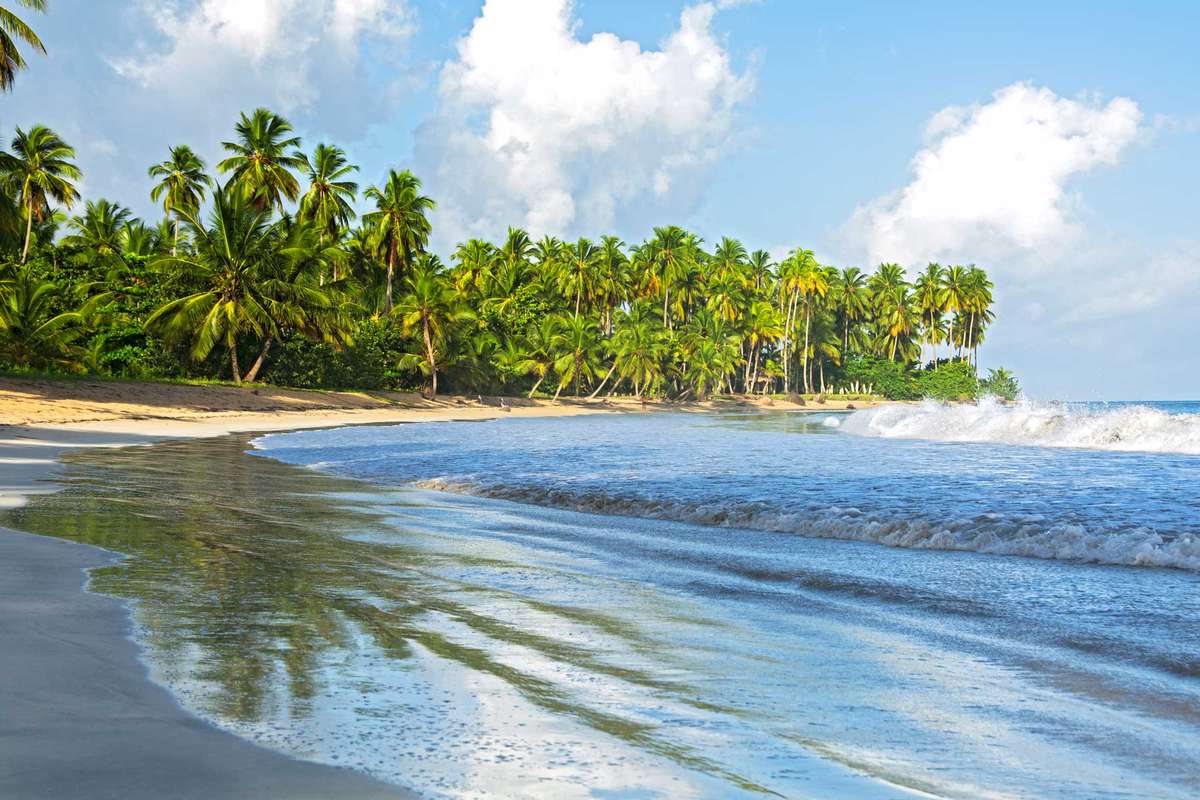
VW PICS/UNIVERSAL IMAGES GROUP VIA GETTY IMAGES
The Dominican Republic lifted border restrictions on July 1. As part of its newly announced “Responsible Tourism Recovery Plan,” visitors will no longer be required to show proof of a negative COVID-19 test in order to enter the country, starting Sept. 15. Additionally, mass testing will not be performed at the airport upon arrival, but will instead be done at random.
To ease some of the concerns of would-be travelers, the Ministry of Tourism, tourists visiting a hotel will be offered a temporary, free travel assistance plan until December 2020. In addition to general emergency coverage, the free insurance plan covers COVID-19 testing, as well as cost coverage for long-term stays should a traveler fall ill or need to quarantine.
Ecuador
Ecuador opened its borders to commercial flights on June 1. Since Aug. 15 travelers have been allowed to skip the mandatory quarantine if they show proof of a negative COVID-19 test taken no more than ten days before arrival and exhibit no symptoms, according to the U.S. Embassy & Consulate in Ecuador. Travelers who don’t have a negative test can get one upon arrival and quarantine at a hotel until they receive negative results.
While the Galapagos has its own restrictions, a new ship, Silversea’s Silver Origin, is set to begin sailing with passengers in September.
Egypt
Egypt allowed international tourists and flights to come into its seaside resorts on July 1, according to Reuters, including southern Sinai and the Red Sea province. This follows the suspension of international flights in March.
U.S. tourists must secure a visa to visit Egypt, according to the State Department. And as of Aug. 15, any foreign visitors must show proof of a negative COVID-19 test taken no more than 72 hours prior to arrival, according to the U.S. Embassy in Egypt. Tourists traveling to some areas — the Red Sea, South Sinai, and Matrouh — are exempt.
Tourists must also show proof of health insurance upon arrival.
Visitors who do go to Egypt will notice health and safety protocols at hotels, including electronic check-in, temperature checks, and sanitization of luggage, according to the country’s tourism site.
In the meantime, explorers can check out this virtual tour of the tomb of Pharaoh Ramses VI from home, allowing people to exercise their inner adventurer without leaving the couch.
French Polynesia
Level 2: Exercise Increased Caution
French Polynesia, known for the crystal clear waters of Tahiti and Bora Bora, reopened its borders for international tourism on July 15, including from the U.S.
Tourists coming to the islands — there’s 118 of them — will have to take a COVID-19 test 72 hours before departure and show those negative results before boarding a flight. Travelers will also be required to have a travel insurance policy. On the fourth day after arrival, travelers will have to perform a self-sampling surveillance test, according to a press release from the French Polynesian government.
Jamaica
Jamaica reopened to international travel on June 15, requiring arriving passengers to undergo a temperature check and having some undergo a COVID-19 test on arrival, according to the Jamaica Tourist Board. Travelers from areas considered “high risk,” including Arizona, Florida, New York, and Texas, have to upload a negative test result when applying to visit.
As of Aug. 7, Jamaica requires visitors to remain under the “Stay in Zone” measure, which allows them to leave their hotels to visit approved places within the area.
The island also introduced protocols for tourism industries, including requiring each hotel to designate at least one employee at a time as a “Covid-19 Safety Point Person” to conduct spot checks.
Maldives
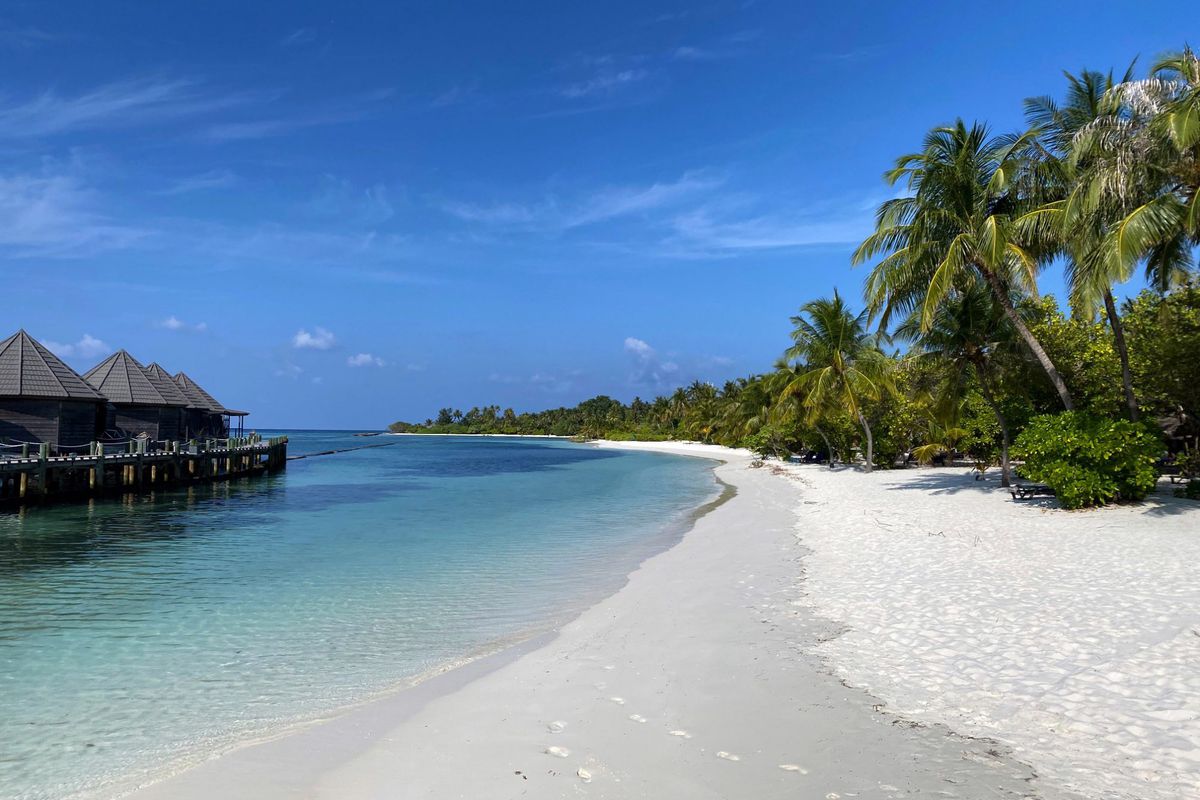
The Maldives PHILIPP HERDER/PICTURE ALLIANCE VIA GETTY IMAGES
Americans looking to take advantage of the luxury of overwater bungalows need look no further than the Maldives, which reopened to international tourism on July 15. The island nation first reopened its uninhabited islands, followed by inhabited islands on Aug. 1.
Visitors don’t have to pay any additional fees or show negative tested results and those who don’t have any symptoms also won’t have to quarantine themselves. But travelers do need to have a confirmed booking before arrival and submit an online health declaration form within 24 hours before departure.
Mexico<
The land border between the U.S. and Mexico will remain closed until at least Sept. 21.
While several states in Mexico reopened for tourism, including Quintana Roo (where popular spots like Cancun are located) as well as Jalisco (where Puerto Vallarta is), further restrictions have since been implemented. Mexico has created a color-coded system for each state, according to the U.S. Embassy & Consulates in Mexico, and has placed both Quintana Roo and Jalisco in the “orange” category, allowing hotels and restaurants to open with 50 percent capacity.
North Macedonia
The country’s Skopje International Airport reopened to international flights on July 1, requiring passengers to disinfect their hands and wear a mask inside the terminal. Screenings with a thermal camera will also be taken.
In North Macedonia, indoor bars and restaurants and gyms were allowed to reopen on June 26, according to the U.S. Embassy in North Macedonia.
Rwanda
Travelers are allowed to go to Rwanda, but must present proof of a negative COVID-19 test taken no more than 120 hours before their flight, according to the U.S. Embassy in Rwanda. Upon arrival, visitors have to quarantine for at least 24 hours in a hotel and undergo a second round of testing. Once they receive a negative result, they can leave quarantine.
Travelers must also fill out a Passenger Locator Form with passport information, travel details, and booking confirmation.
When travelers are ready to leave the country, they must test negative for the virus once again within 120 hours of their scheduled departure.
Rwanda currently has a nightly curfew but has reopened restaurants, hotels, and shops, along with national parks to visitors with a negative COVID-19 test.
Saint Lucia

Saint Lucia reopened to international tourists on June 4. On July 9, the nation started requiring travelers to obtain a negative COVID-19 test within seven days before their arrival. Travelers also have to complete a pre-arrival registration form and undergo a temperature check upon arrival.
Saint Lucia has implemented a COVID-19 certificate for hotels, requiring them to meet more than a dozen criteria for sanitization protocols, social distancing, and more.
Saint Vincent and the Grenadines
Visitors to St. Vincent and the Grenadines have to complete a pre-arrival form, which can be accessed online, according to the U.S. Embassy in Barbados. Travelers also need to show a negative COVID-19 test taken within five days of arrival or undergo a test upon arrival. Those who choose to take the test upon arrival will be quarantined for at least 24 hours while waiting for the results.
Travelers who arrive by air will also have to quarantine for at least 24 hours to await test results of all passengers from the same flight.
Sint Maarten
On Aug. 1, flights between the U.S. and Sint Maarten resumed with travelers having to fill out an online immigration card prior to travel, according to the U.S. Consulate General in Curacao. Travelers must also present a negative COVID-19 test taken within 72 hours of arrival.
Serbia
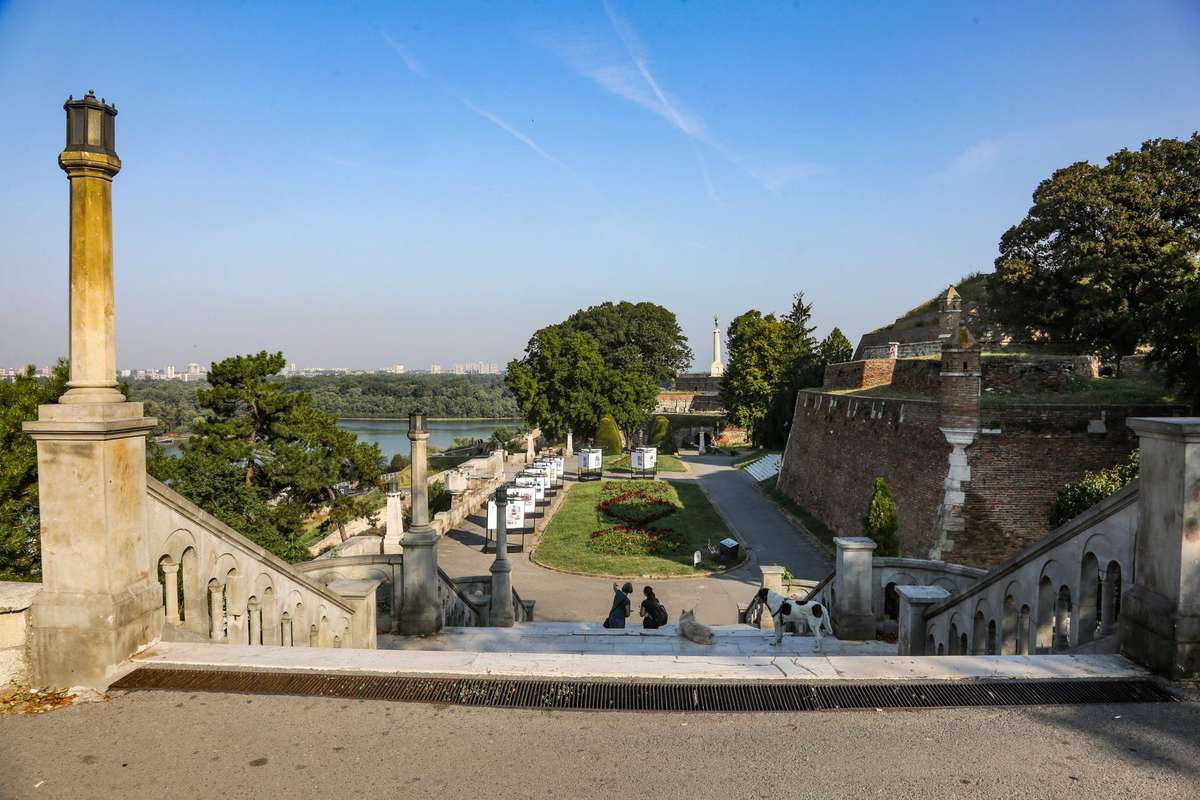
Serbia NICOLAS ECONOMOU/NURPHOTO VIA GETTY IMAGES
Serbia lifted all COVID-19-related restrictions for both Serbian and foreign citizens, according to the U.S. Embassy in Serbia, allowing people to enter the country.
Anyone arriving from North Macedonia, Croatia, Bulgaria, or Romania, however, must show a negative COVID-19 test taken within the 48 hours.
In Serbia, masks are required in all indoor locations as well as outdoors when physical distancing is not possible, and there is a ban on public gatherings for more than 10 people.
Serbia also happens to have one of the best under-the-radar wine regions in Europe, perfect for some off-the-beaten path exploring.
Tanzania
The suspension on international flights to Tanzania has been lifted, according to the U.S. Embassy in Tanzania, and travelers are expected to fill out a Health Surveillance Form on the plane.
On June 26, the Tanzania Tourist Board promoted travel to the country with a Facebook video showing health measures like hand washing and temperature checks, and touting Tanzania as a safe and “unforgettable” destination.
Turkey
Turkey started opening some international air, land, and sea borders on June 11, according to the U.S. Embassy & Consulates in Turkey. Upon arrival in Istanbul, passengers at the airport undergo a temperature check with a thermal camera, according to the airport. Visitors are not required to show any health documentation to enter or leave the country.
Masks are required to be worn in public areas throughout Turkey, including Istanbul.
Turks and Caicos

Grace Bay in the Turks and Caicos COURTESY OF TURKS AND CAICOS ISLANDS TOURIST BOARD
Turks and Caicos, a British territory, reopened to international travel on July 22, welcoming tourists to its more than 40 small islands and pristine beaches. In order to visit the island, visitors need to present a negative COVID-19 test taken within five days of travel, have insurance that covers medevac, and complete a health screening questionnaire, according to the Minister of Tourism.
The Grand Turk Cruise Center will remain closed until August 31.
On June 5, the islands allowed retail businesses to reopen, and restaurants in most of the territory opened on July 6.
Ukraine
Ukraine considers the U.S. a country with a high incidence of COVID-19, and requires citizens to either self-quarantine or take a COVID-19 test upon arrival at the international airports, according to the U.S. Embassy in Ukraine. Those test results will be emailed within 24 hours and passengers have to self-quarantine until that happens.
It is mandatory to wear masks in public places, according to the embassy.
United Arab Emirates
Dubai, in the United Arab Emirates, allowed foreign tourists to return to the bustling city starting July 7, requiring visitors to download the city’s COVID-19 DXB app and register. Tourists have to either arrive with a negative COVID-19 test taken no more than four days before departure or get tested at the airport upon arrival, according to the government.
Visitors are also required to have medical travel insurance that covers COVID-19, according to the Dubai Corporation of Tourism & Commerce Marketing. The airport will also implement thermal temperature screenings.
Dubai has allowed services like restaurants to reopen with restrictions.
In addition, Ras Al Khaimah (which received a “Safe Travel Label” from the World Travel & Tourism Council) allowed international visitors to arrive, mandating many of the same requirements as Dubai. In order to stay in Ras Al Khaimah, travelers must have a hotel booking confirmed as well as sign a health declaration form.
Zimbabwe
Zimbabwe announced it will restart domestic flights on Thursday, Sept. 10, and international flights on Oct. 1, Reuters reported. Travelers will need to be tested before arrival. “All travelers will be required to have a PCR COVID-19 clearance certificate issued by a recognized facility within 48 hours from the date of departure.”
The following countries are also accepting travelers coming from America, but require a mandatory quarantine or self-isolation period:
- Bahamas
- Ethiopia
- Ireland
- St. Barthélemy
- United Kingdom
Source: travelandleisure.com





